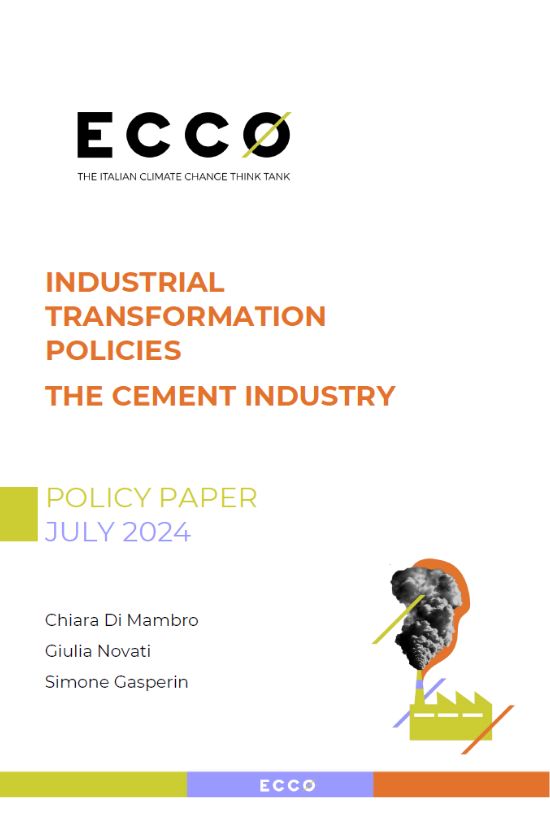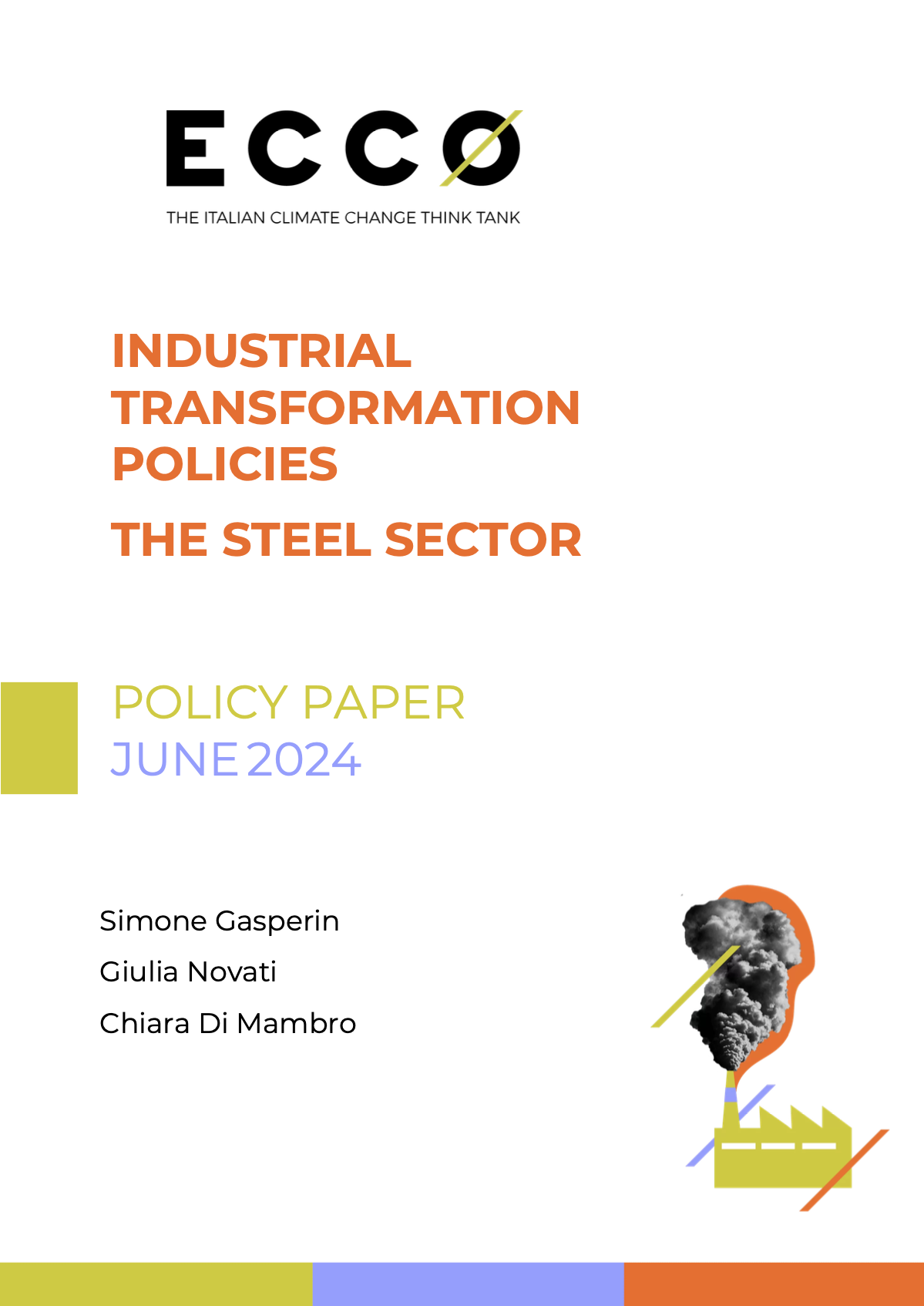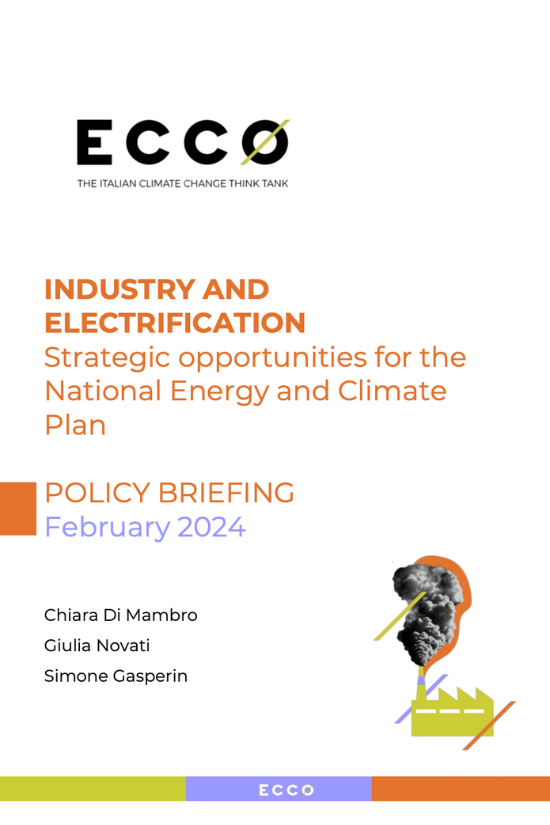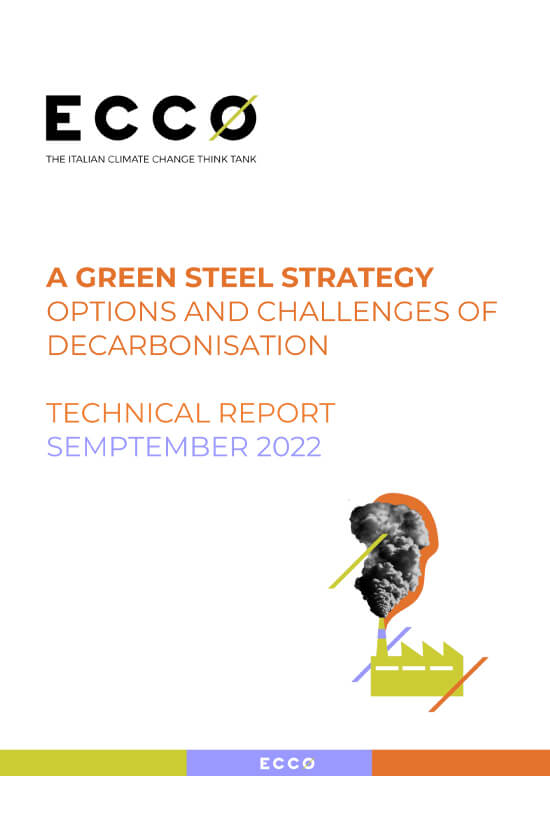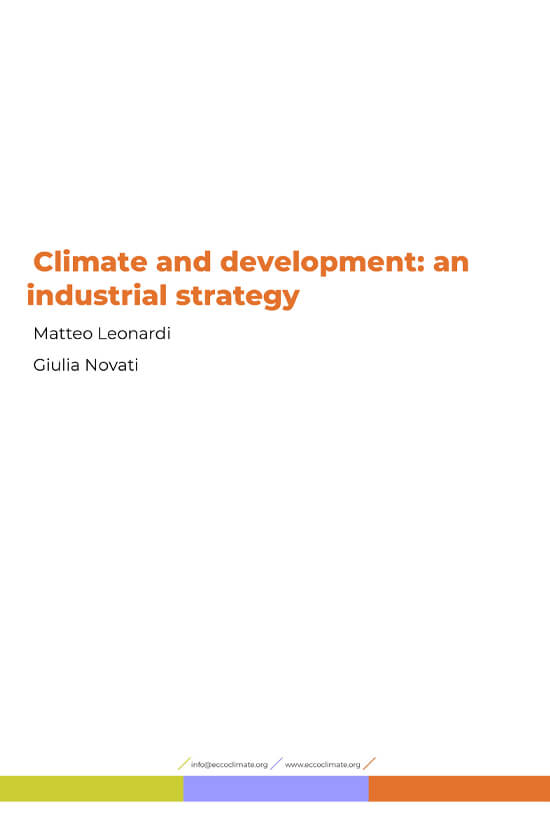Publications
Search
Filters
Authors
/ Alexandra Scott
/ Andrea Ghianda
/ Annalisa Perteghella
/ Beatrice Moro
/ Carolina Bedocchi
/ Caterina Molinari
/ Chiara Di Mambro
/ Chiara Mariotti
/ Chloe Pagliaro
/ Costanza Scano
/ Davide Panzeri
/ ECCO think thank
/ Eleonora Cogo
/ Federico Tassan-Viol
/ Filomena Annunziata
/ Francesca Andreolli
/ Francesca Bellisai
/ Gabriele Cassetti
/ Giovanni D'Amico
/ Giulia Colafrancesco
/ Giulia Giordano
/ Giulia Novati
/ Giulia Signorelli
/ Ilaria Mazzocco
/ Lorena Stella Martini
/ Luca Bergamaschi
/ Luca Iacoboni
/ Mario Noera
/ Marta Lovisolo
/ Massimiliano Bienati
/ Matteo Leonardi
/ Matteo Viola
/ Michele Governatori
/ Nicolas Drago
This analysis proposes a simplified and aggregated policy framework that’s consistent with the transition towards climate neutrality as well as an outline and assessment of the policies currently in place in the cement industry in Italy, which is the second largest producer of cement in the European Union and a major consumer of cement and concrete.
The biggest obstacle for zero/low emission or green steel is the simple fact that, within the current market, it isn’t cost-competitive. In light of the complex regulatory framework that has been developed around energy and climate objectives, this policy paper offers a perspective and a conceptual outline for defining a policy framework that’s consistent with the country's emission reduction goals.
The significant contribution to national emissions by the manufacturing sector depends on its reliance on the use of fossil fuels for energy purposes, as well as on emissions that are inherent in certain production processes (e.g. cement, chemicals, etc.). Framing the country’s industrial development prospects within the path of reducing greenhouse gas emissions represents a strategic opportunity. The definition of the National Energy and Climate Plan (NECP) due by next June, is a unique opportunity for action.
The aim of this paper is to provide an overview of the technologies available for the decarbonization of the steel sector in Italy and to identify a decarbonization path in response, on the one hand, to the risks of de-industrialization and, on the other, to the risks of lock-in of investments in supply chains that are not compatible with the net zero emissions perspective.
The report analyzes critical issues, solutions and future scenarios to promote a decarbonization of the plastics supply chain that will allow the sector to remain competitive and, at the same time, remain aligned with the 2050 climate neutrality goals.
Italy is the second largest steel producer in Europe and the 11th largest in the world. In 2019, 23.2 Mt of steel was produced at the Acciaierie d'Italia plant in Taranto (Ex Ilva). In this report we take an in-depth look at steel production in Italy, analyzing the specific case of the only Italian plant that currently produces it, namely the Taranto steel plant
Full decarbonization by 2050 requires the development of new industrial strategies aligned with climate goals. In this study, we delve into emission reduction technology options and suggest industrial decarbonization strategies to address climate change through the levers of innovation, welfare, and employment.
This analysis proposes a simplified and aggregated policy framework that’s consistent with the transition towards climate neutrality as well as an outline and assessment of the policies currently in place in the cement industry in Italy, which is the second largest producer of cement in the European Union and a major consumer of cement and concrete.
The biggest obstacle for zero/low emission or green steel is the simple fact that, within the current market, it isn’t cost-competitive. In light of the complex regulatory framework that has been developed around energy and climate objectives, this policy paper offers a perspective and a conceptual outline for defining a policy framework that’s consistent with the country's emission reduction goals.
The significant contribution to national emissions by the manufacturing sector depends on its reliance on the use of fossil fuels for energy purposes, as well as on emissions that are inherent in certain production processes (e.g. cement, chemicals, etc.). Framing the country’s industrial development prospects within the path of reducing greenhouse gas emissions represents a strategic opportunity. The definition of the National Energy and Climate Plan (NECP) due by next June, is a unique opportunity for action.
The aim of this paper is to provide an overview of the technologies available for the decarbonization of the steel sector in Italy and to identify a decarbonization path in response, on the one hand, to the risks of de-industrialization and, on the other, to the risks of lock-in of investments in supply chains that are not compatible with the net zero emissions perspective.
The report analyzes critical issues, solutions and future scenarios to promote a decarbonization of the plastics supply chain that will allow the sector to remain competitive and, at the same time, remain aligned with the 2050 climate neutrality goals.
Italy is the second largest steel producer in Europe and the 11th largest in the world. In 2019, 23.2 Mt of steel was produced at the Acciaierie d'Italia plant in Taranto (Ex Ilva). In this report we take an in-depth look at steel production in Italy, analyzing the specific case of the only Italian plant that currently produces it, namely the Taranto steel plant
Full decarbonization by 2050 requires the development of new industrial strategies aligned with climate goals. In this study, we delve into emission reduction technology options and suggest industrial decarbonization strategies to address climate change through the levers of innovation, welfare, and employment.
